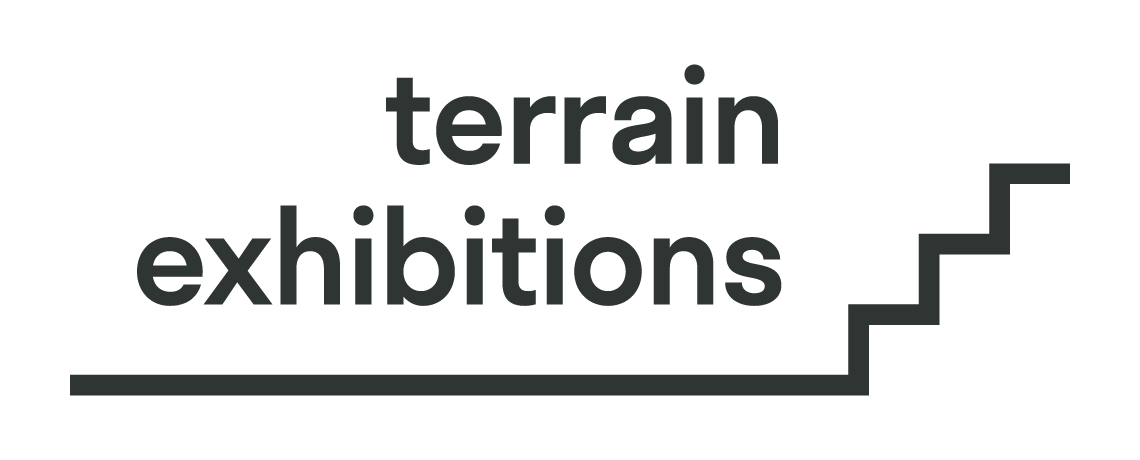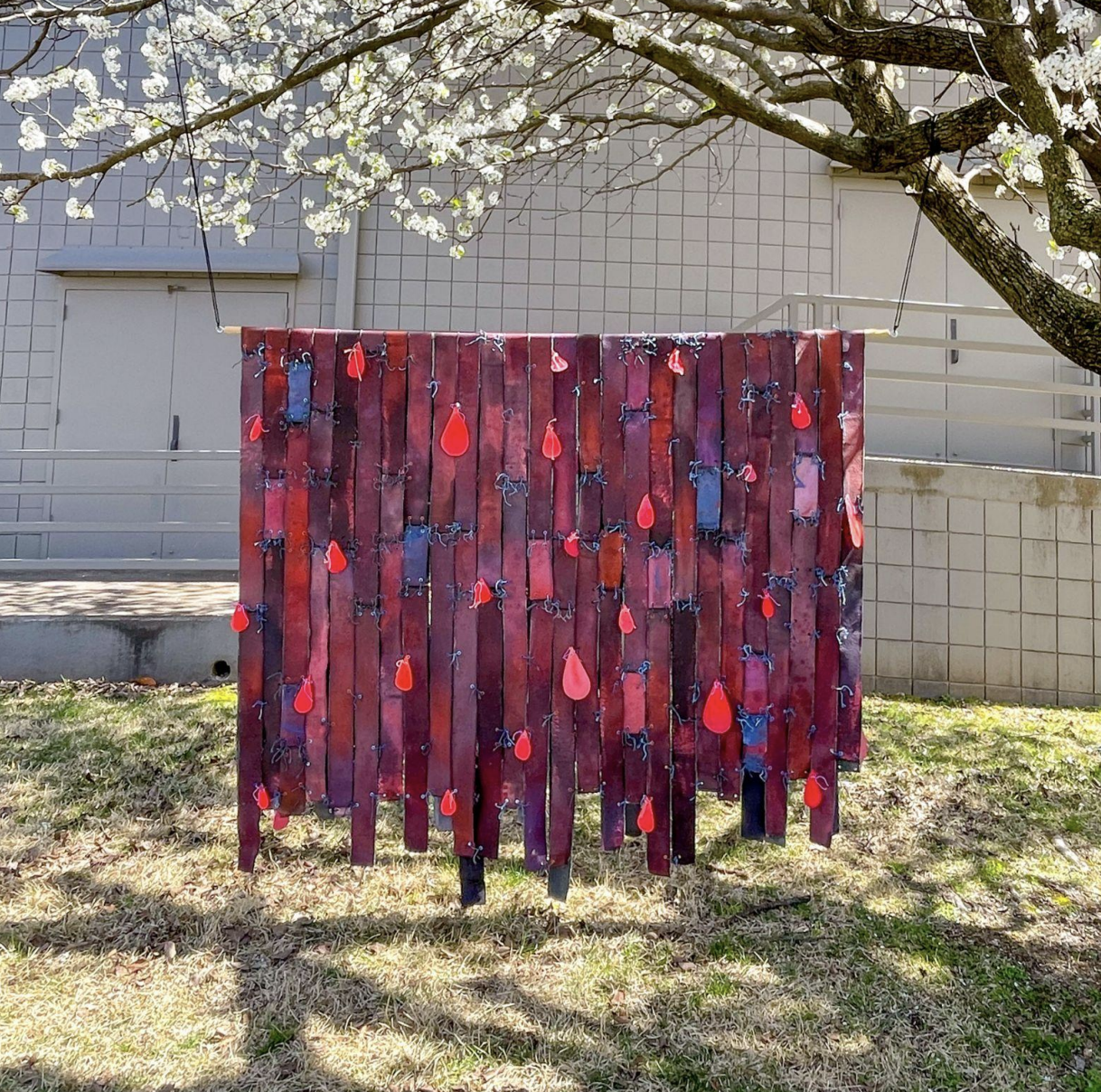2023 Terrain Residency
artists in residence
Ziba Rajabi
Ziba Rajabi (b.1988, Tehran, Iran) received her MFA from the University of Arkansas, Fayetteville, and her BFA from the Sooreh University, Tehran. Her primary practice is focused on painting, drawing, and fabric-based installation. She is the recipient of the Artist 360 Grant, a program sponsored by the Mid-America Arts Alliance. Her work has been included in a number of exhibitions, nationally and internationally, such as Crystal Bridges Museum of American Art; AR, CICA Museum; South Korea; Masur Museum; LA; 21C Museum, AR; Araan Gallery, Iran; The II Platform, UK, among many others. She has been an artist in residence at Vermont Studio Center as well as Anderson Ranch Arts Center.
Ziba’s artist statement
As an Iranian female artist based in the US, my work revolves around the desire to reconcile my relationship with two distinctive spaces: Iran (my native land) and the US (where I reside now). In my paintings and installations, I re-create intimate moments culled from my home and neighborhood in Iran. Due to the situation where I am far away from my homeland, I can feel my memories of home fading away. By utilizing memories from my past, I take aspects of images that are no longer recognizable and, therefore, are abstracted into shapes that allude to elements found in my homeland. Consequently, aspects of everyday life such as architecture, furniture, gardens, or a specific time of day become the basis for my work. My desire is to create a situation where the viewer looks at abstract paintings or installations and feels a familiarity, but can’t quite place what it is or why they sense a kinship. By creating this kind of scenario, I can show that regardless of nationality, religion, or gender there are commonalities for all individuals.
Ziba Rajabi, Zolf, Acrylic on canvas, grommet, dyed thread, 66”X60.” Part of the Soft Power exhibition curated by Danielle Hatch, 2023.
Carlos Salazar-Lermont, Sanctuary, 3-channel video installation, mylar emergency blanket, Golden leaf, and Venezuelan arepa corn flour package plastic on wood, 3 LCD 40” TVs, acrylic, marker. 53 min loop. Variable dimensions. Installed at 9 Ways From Sunday, Mildred Lane Kemper Art Museum, St. Louis, United States, 2022.
Carlos Salazar-Lermont
Carlos Salazar-Lermont is a Venezuelan artist and curator. He received his MFA in Visual Arts from the Sam Fox School of Design and Visual Arts at Washington University in St. Louis as a Danforth Scholar (2022); and a Dual MA in Arts Administration & Policy and Modern and Contemporary Art History in the School of the Art Institute of Chicago, with the support of the New Artists Society Full Tuition scholarship. Salazar-Lermont’s work has been exhibited internationally in museums, institutions, and galleries in over a dozen countries, including Argentina, Brazil, Colombia, Dominican Republic, England, Finland, Mexico, Netherlands, Peru, Trinidad & Tobago, the United States, and Venezuela. He is based in Chicago and St. Louis and is a part-time Lecturer at the Sam Fox School of Design and Visual Arts, Washington University in St. Louis, MO.
Carlos’ artist statement
My practice is defined by two branches of research, which reflect a dialogue between extrospection and introspection: On the first one, the most extrospective, I study Latin America’s historical circumstances by deconstructing the social, political, and economic fabrics that define them. I aim to dismantle dehumanizing myths by visualizing the paradoxes between what is said about us and our reality.
With the second branch, I attempt to disclose the underlying Catholic origin of Latin American cultural burdens, such as the glorification of poverty, guilt, and self-humiliation. I use visual codes inherited from the colonial process to reveal these structures. The concept of Vanitas appears constantly in this branch. Originating in the book of Ecclesiastes, it states how the ephemerality of life divests existence from any transcendental sense.
Performativity is the common thread between these branches, expressed in a post-mediatic language. I use everything at my reach–live performance, photography, video, and other forms of time-based media– to express the transformative potential of action.
In my practice, Latinx culture’s interpersonal proximity is key for creating experiences that connect with the audience’s emotions. I use my artistic process to understand my social and political reality more deeply. I seek to make my work a pedagogical device from which my audiences and I can learn more about who we are and our place in history.
About the Terrain Residency
The Terrain Residency, hosted by the Springfield Art Association (SAA) Enos Park Residency for Visual Artists, is located in Springfield, Illinois, for a period of four to six weeks every summer. Artists are invited to live and work at the residency duplex to pursue the development of public projects: art installations, architectural interventions, performances, social practice, and community programs. Residents will have access to specialized Visual Arts program studio facilities at the University of Illinois Springfield (UIS), and are provided with a stipend of $600 to help offset material and travel expenses.
The residency duplex, located in a historic neighborhood within walking distance to Downtown Springfield, serves as a central site/laboratory where projects can be developed, and offers unique architecture and surrounding grounds that are also rich with potential. The duplex is a high-visibility site and straddles the experience of suburban and downtown living. The duplex, SAA grounds, Historic Edwards Place, and many residential homes in the neighborhood have served as sites for previous iterations of the Terrain Biennial. Terrain can forge relationships in the neighborhood and secure sites for the development of site-based works as desired by the residents.
All applications for the 2023 Terrain Residency were reviewed by a panel of Terrain board members and volunteers, as well as guest panelist, Christa Donner. Many thanks to Christa for sharing her time and perspectives!
About Christa Donner
Christa Donner is an artist, curator, and organizer whose practice combines material exploration with social exchange. Working across a range of media including sound, large-scale drawing, and small-press publications, she creates multi-layered projects that are both intimate and community-centered. In 2012 Donner initiated Cultural ReProducers, an evolving creative platform that supports parents in the arts through events, publications, skillsharing, and an extensive online resource for artists and institutions. Her curatorial collaborations include “Page Me” (with Chris Conti for SPACES Gallery, 2003), “Biological Agents” (with Andrew S. Yang for Gallery 400, 2008), and “Division of Labor” (with Thea Liberty Nichols for Glass Curtain Gallery, 2014), a Critic’s Pick in both the Chicago Tribune and Artforum.com, which addressed the impact of parenthood on an artist’s practice and career. Her artistic work is exhibited widely, including projects for the NTU Centre for Contemporary Art in Singapore; the Max Planck Institute for the History of Science (Berlin, Germany); BankArt NYK (Yokohama, Japan); Chiaki Kamikawa Contemporary Art (Paphos, Cyprus); the Museum Bellerive (Zurich, Switzerland); and throughout the United States. For more information visit www.christadonner.com





